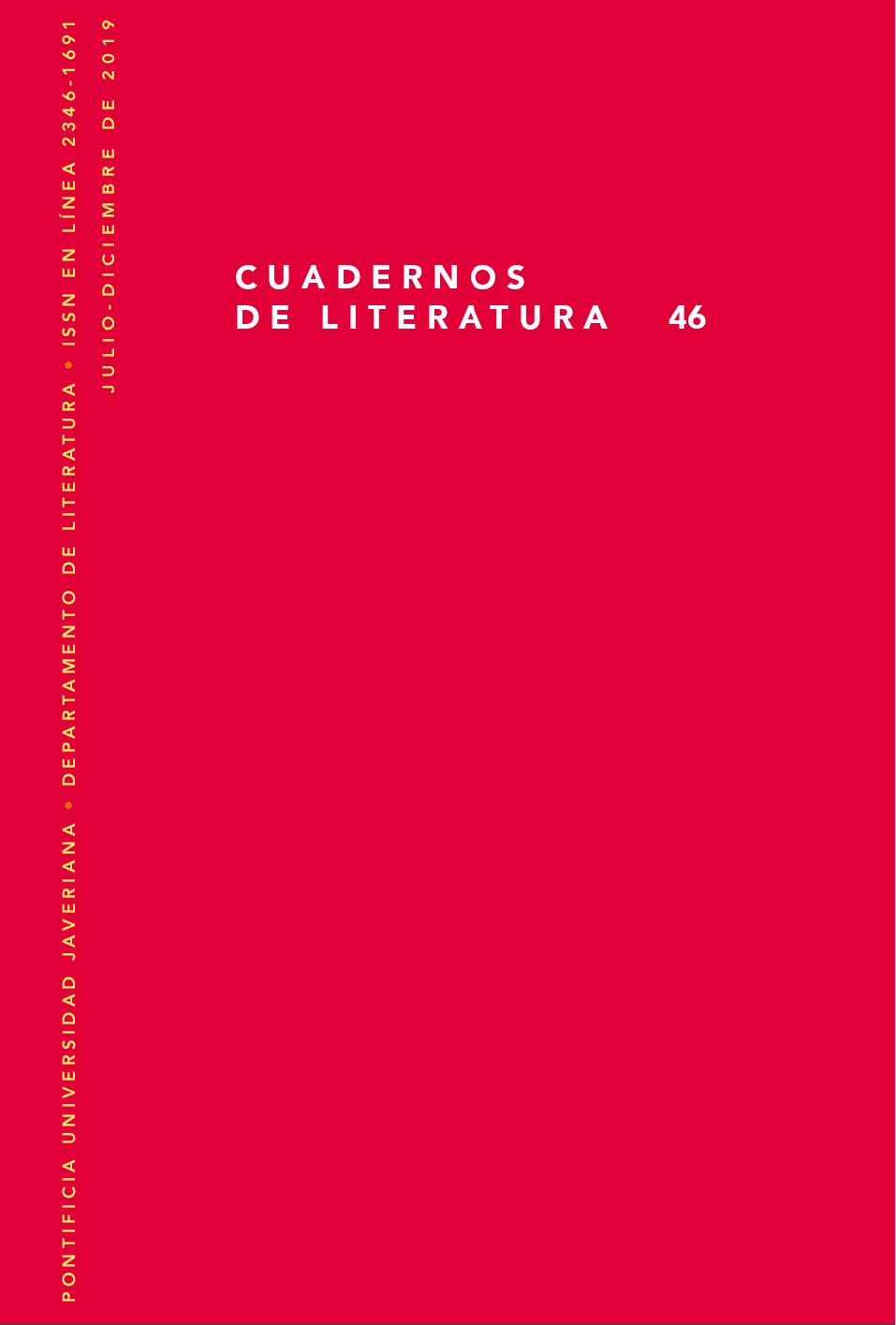Abstract
El presente dossier, Biopolíticas de la visualidad en la necrópolis contemporánea, propone discutir aquello que aún prevalece, aquello que se resiste a ser arrasado o exterminado, aquello que continúa siendo capaz de responder a las maquinarias necropolíticas del presente. Las preguntas que anudan los diferentes artículos de este dossier radican en la legibilidad de tales operaciones: ¿somos capaces de leer la impronta de la biopolítica en la visualidad contemporánea? ¿en qué sentido aún ella resulta legible? ¿es su legibilidad una vía factible de desacelerarla, disputarla, destituirla? Todos los artículos ponen en marcha máquinas de interpretación que intentan desconfigurar los algoritmos del necropoder y del biopoder y, por lo tanto, su injerencia e impacto sobre nuestras vidas. A fin de cuentas, todos los artículos dan testimonio de nuestra inquebrantable voluntad de sobrevivir.
Artaud, Antonin. El teatro y su doble. Barcelona: Edhasa, 2001. Impreso. Barthes, Roland. La Chambre claire. Note sur la photographie. Paris: Éditions de l’Étoile - Gallimard - Le Seuil, 1980. Impreso.
Benjamin, Walter. Das Kunswerk im Zeitalter seiner technischen Reproduzierbarbarkeit. Francfort a. M: Suhrkamp Verlag, 2003. Impreso.
De Lauretis, Teresa. Technologies of Gender: Essays on Theory, Film, and Fiction. Bloomington: Indiana University Press, 2001. Impreso.
Deotte, Jean Louis. Qu’est-ce qu’un appareil? Benjamin, Lyotard, Rancière. Paris: L’harmattan, 2007. Impreso.
El Club. Dir. Pablo Larraín, Fábula, 2015. Filme.
Eltit, Diamela. Réplicas. Santiago: Seix Barral, 2016. Impreso.
“Growing Plants in the Space”. NASA. Web. 1 de julio de 2019.
Ludmer, Josefina. Aquí América Latina. Una especulación. Buenos Aires: Eterna Cadencia, 2008. Impreso.
“Nomad 13”. www.beatrizcortez.com. Web. 1 de julio de 2019.
Post Mortem. Dir. Pablo Larraín, Auntentika Films, Fábula, 2010. Filme.
Quiñones Keber, Eloise. “Xolotl: Dogs, Death, And Deities in Aztec Myth”. Latin American Indian Literatures Journal 7.2 (1991): 229-239. Impreso.
Rancière, Jacques. Le spectateur émancipé. Paris: La Fabrique Éditions, 2008. Impreso.
Reguillo, Rossana. “La narcomáquina y el trabajo de la violencia: apuntes para su decodificación”. e-misférica 8.2 (2011). Web. 1 de julio de 2019.
Segato, Rita. La guerra contra las mujeres. Buenos Aires: Tinta Limón, 2017. Impreso.
Tony Manero. Dir. Pablo Larraín, Fábula, 2008. Filme.
Cuadernos de Literatura is registered under a Creative Commons Attribution 4.0 International Public License. Thus, this work may be reproduced, distributed, and publicly shared in digital format, as long as the names of the authors and Pontificia Universidad Javeriana are acknowledged. Others are allowed to quote, adapt, transform, auto-archive, republish, and create based on this material, for any purpose (even commercial ones), provided the authorship is duly acknowledged, a link to the original work is provided, and it is specified if changes have been made. Pontificia Universidad Javeriana does not hold the rights of published works and the authors are solely responsible for the contents of their works; they keep the moral, intellectual, privacy, and publicity rights.
Approving the intervention of the work (review, copy-editing, translation, layout) and the following outreach, are granted through an use license and not through an assignment of rights. This means the journal and Pontificia Universidad Javeriana cannot be held responsible for any ethical malpractice by the authors. As a consequence of the protection granted by the use license, the journal is not required to publish recantations or modify information already published, unless the errata stems from the editorial management process. Publishing contents in this journal does not generate royalties for contributors.


